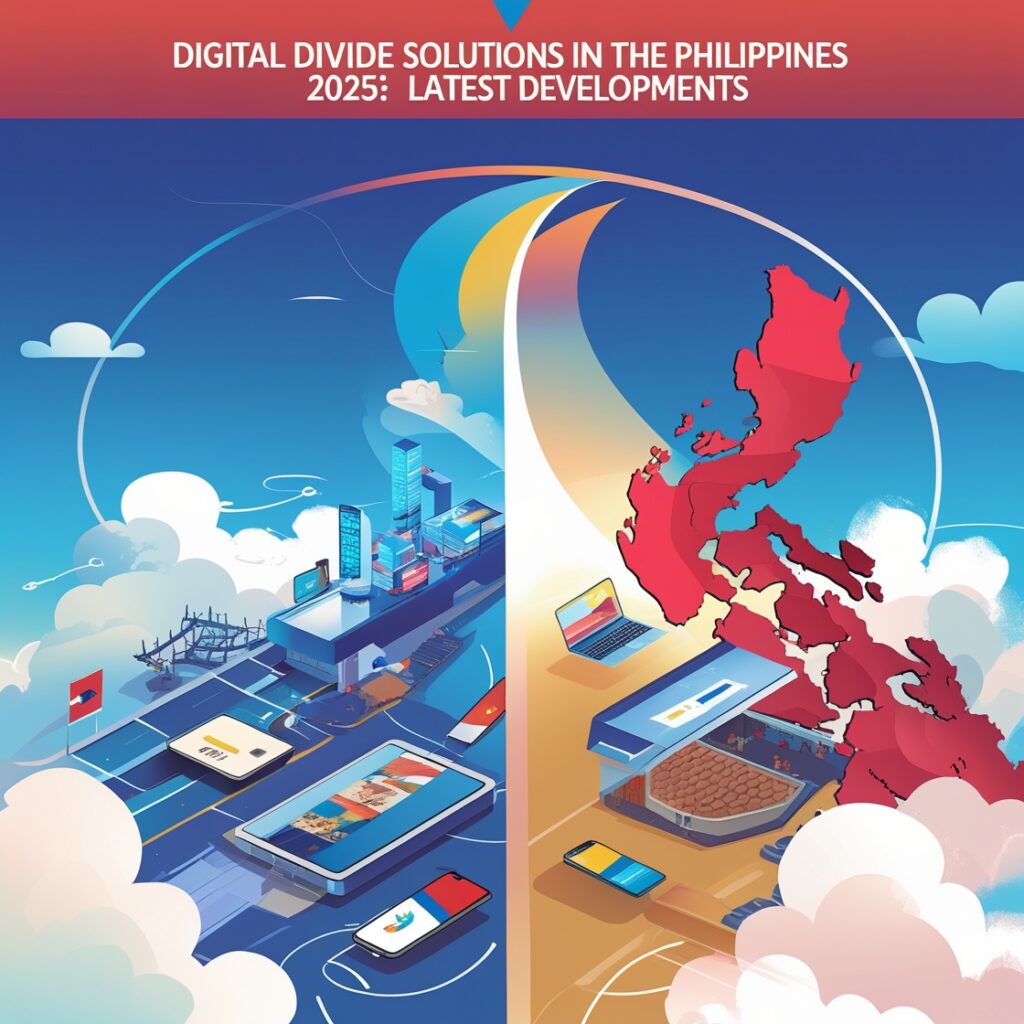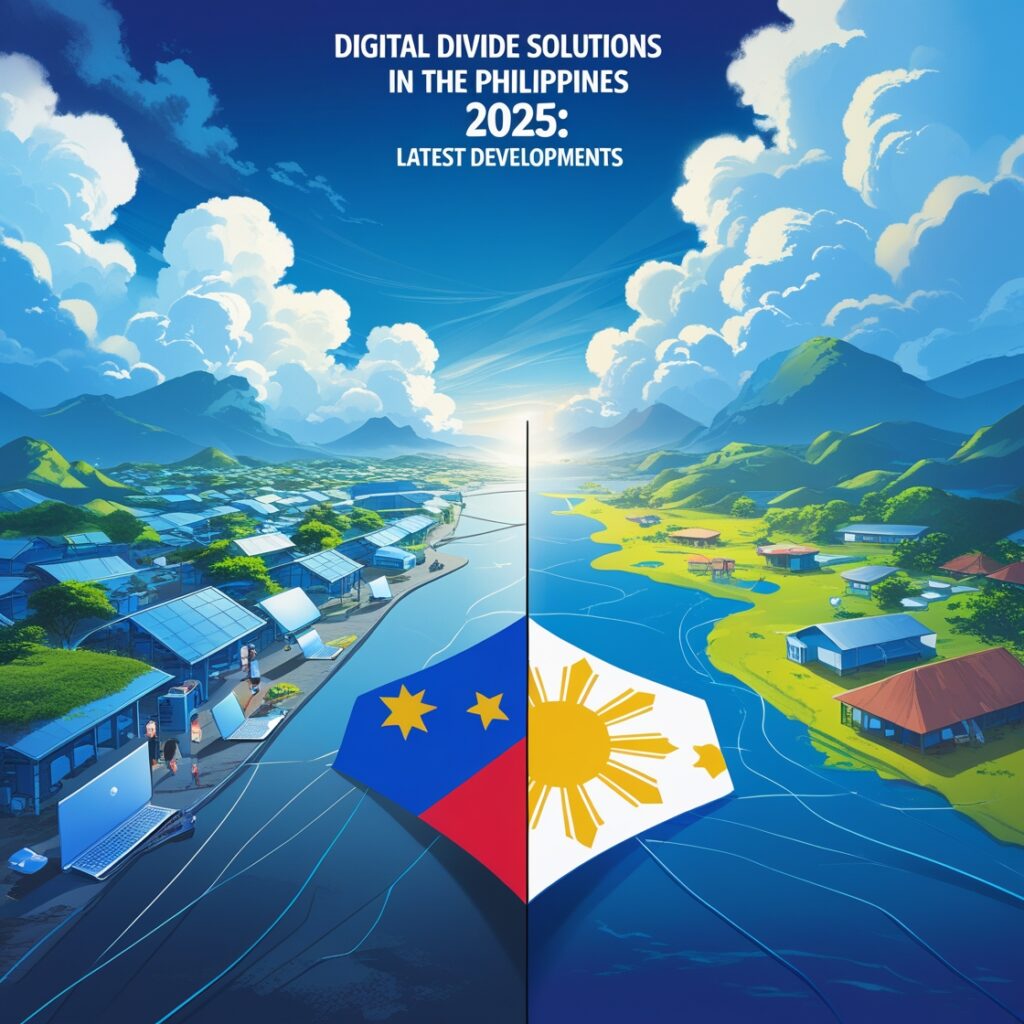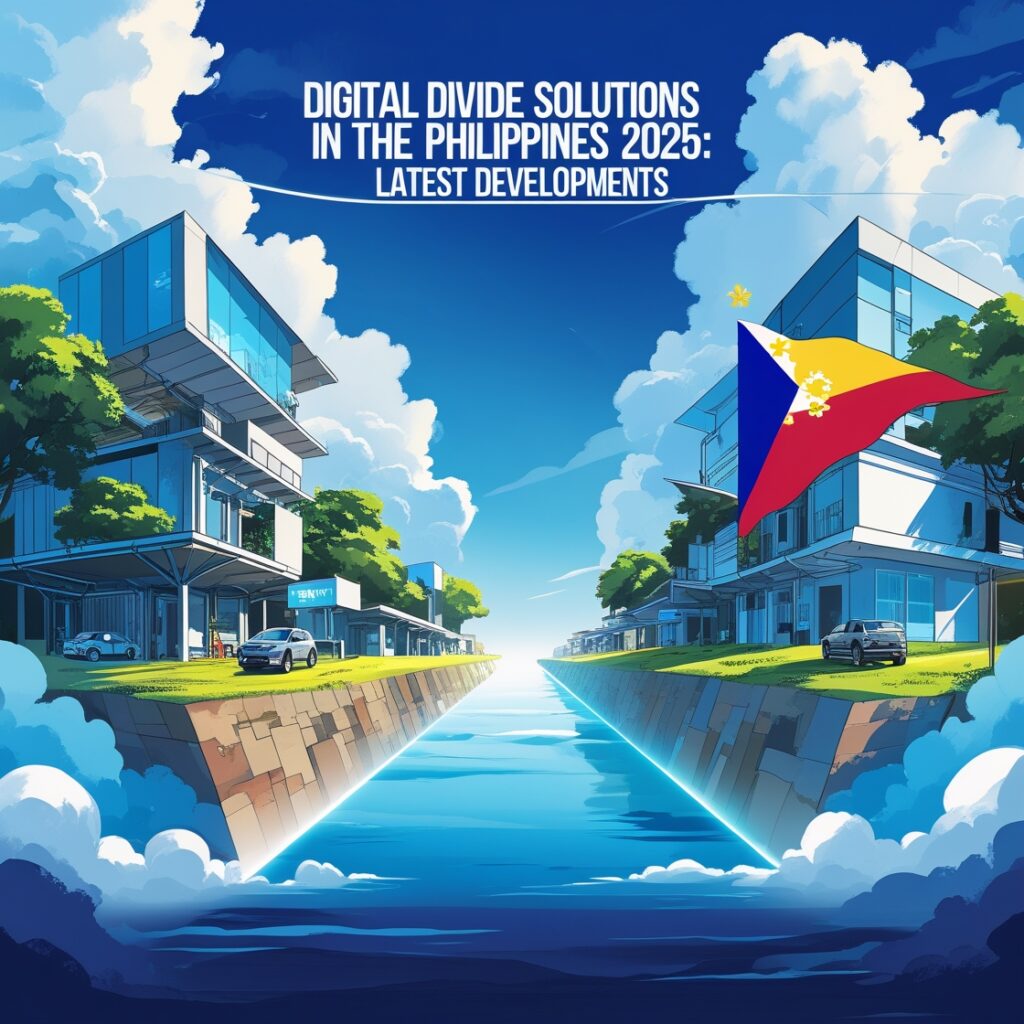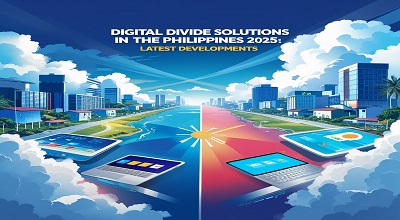Digital Divide Solutions
Digital Divide Solutions: The digital divide remains a pressing issue in the Philippines, affecting socio-economic development and access to essential services. This article explores the latest solutions implemented up to 2025 to bridge this gap, focusing on infrastructure development, policy initiatives, educational programs, and public-private partnerships. By examining these efforts, we aim to provide a comprehensive overview of the strategies employed to promote digital inclusion across the nation.
Introduction – Digital Divide Solutions
In the digital age, equitable access to information and communication technologies (ICT) is crucial for socio-economic progress. The digital divide—disparities in access to digital resources—poses significant challenges, particularly in developing nations like the Philippines. Addressing this divide is imperative to ensure inclusive growth and participation in the global digital economy.

Current State of the Digital Divide in the Philippines
As of 2025, the Philippines has made strides in ICT development; however, disparities persist. Urban areas exhibit higher internet penetration rates compared to rural regions, where connectivity remains limited. Factors contributing to this divide include inadequate infrastructure, economic constraints, and varying levels of digital literacy among the population.
Infrastructure Development Initiatives
To enhance connectivity, the Philippine government has prioritized infrastructure projects:
- National Broadband Plan (NBP): Launched to establish a robust broadband backbone, the NBP aims to improve internet speed and accessibility nationwide. By 2025, significant progress has been made in expanding fiber optic networks, particularly in underserved areas.
- Free Wi-Fi for All Program: This initiative focuses on providing free internet access in public places, including schools, parks, and transportation hubs. The program has successfully deployed thousands of Wi-Fi hotspots, benefiting millions of Filipinos.
Policy and Regulatory Frameworks
Effective policies are essential to foster digital inclusion:
- Digital Infrastructure Policy: The government has implemented policies encouraging private sector investment in ICT infrastructure, offering incentives and streamlining regulatory processes to expedite deployment.
- Data Privacy and Protection Laws: Strengthening data protection frameworks has built public trust in digital services, encouraging more individuals to engage online.

Educational Programs and Digital Literacy
Bridging the digital divide extends beyond infrastructure; it encompasses equipping citizens with necessary skills:
- Digital Literacy Campaigns: Collaborations between government agencies and non-governmental organizations have led to widespread digital literacy programs, targeting various demographics to enhance their ICT competencies.
- Integration of ICT in Education: The Department of Education has integrated ICT into the curriculum, ensuring students acquire digital skills from an early age, preparing them for the demands of the modern workforce.
Public-Private Partnerships
Collaborations between the government and private sector have been instrumental:
- Telecommunications Expansion: Partnerships with telecom companies have accelerated the rollout of mobile networks, particularly in remote areas, through shared infrastructure agreements.
- Tech Industry Involvement: Technology firms have contributed by providing resources for digital literacy programs and developing localized content to cater to diverse linguistic and cultural contexts.
Challenges and Future Directions
Despite progress, challenges remain:
- Geographical Barriers: The archipelagic nature of the Philippines presents logistical challenges in infrastructure deployment, necessitating innovative solutions such as satellite technology.
- Affordability: Ensuring that digital services are affordable for all socio-economic groups is crucial to prevent further entrenchment of the divide.
- Sustainable Development: Ongoing efforts must focus on sustainable models that adapt to technological advancements and changing societal needs.
Conclusion

By 2025, the Philippines has undertaken comprehensive measures to bridge the digital divide, encompassing infrastructure development, policy reforms, educational initiatives, and public-private partnerships. While significant progress has been achieved, continuous efforts are essential to address remaining challenges and ensure that all Filipinos can participate fully in the digital age.
FAQs (Digital Divide Solutions)
Q1: What is the digital divide?
A1: The digital divide refers to the gap between individuals who have access to modern information and communication technologies and those who do not, leading to disparities in opportunities and socio-economic outcomes.
Q2: How has the Philippine government addressed the digital divide?
A2: The government has implemented initiatives such as the National Broadband Plan and the Free Wi-Fi for All Program, alongside policy reforms to encourage private sector investment in ICT infrastructure.
Q3: What role does education play in bridging the digital divide?
A3: Education is pivotal; integrating ICT into the curriculum and conducting digital literacy campaigns equip individuals with necessary skills to utilize digital technologies effectively.
Q4: How do public-private partnerships contribute to digital inclusion?
A4: Collaborations between the government and private sector have facilitated infrastructure expansion, resource provision for literacy programs, and development of localized digital content.
Q5: What challenges persist in bridging the digital divide in the Philippines?
A5: Challenges include geographical barriers hindering infrastructure deployment, affordability of digital services, and the need for sustainable development models to keep pace with technological advancements.
Q6: How does the National Broadband Plan aim to improve connectivity?
A6: The National Broadband Plan aims to establish a robust broadband infrastructure, enhancing internet speed and accessibility across the nation, particularly in underserved areas.
Q7: What future strategies are essential for digital inclusion?
A7: Future strategies should focus on leveraging emerging technologies, ensuring affordability, continuous skill development, and fostering inclusive policies to adapt to evolving digital landscapes.
